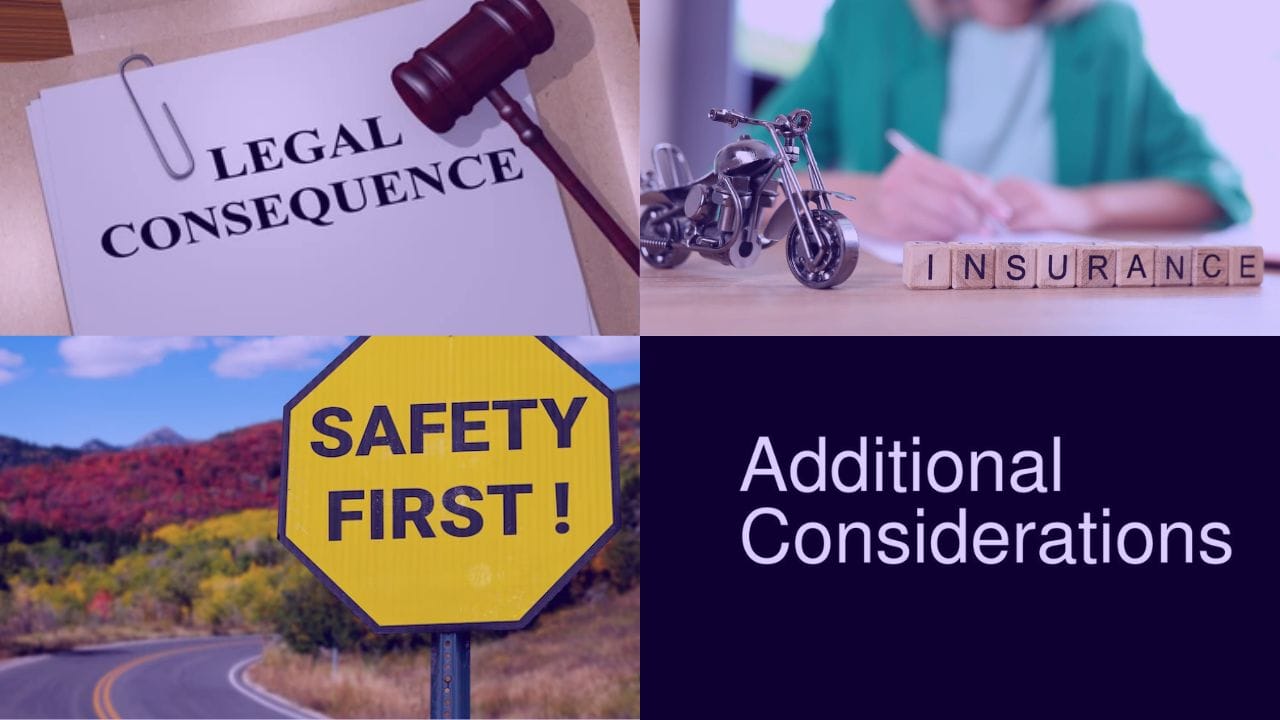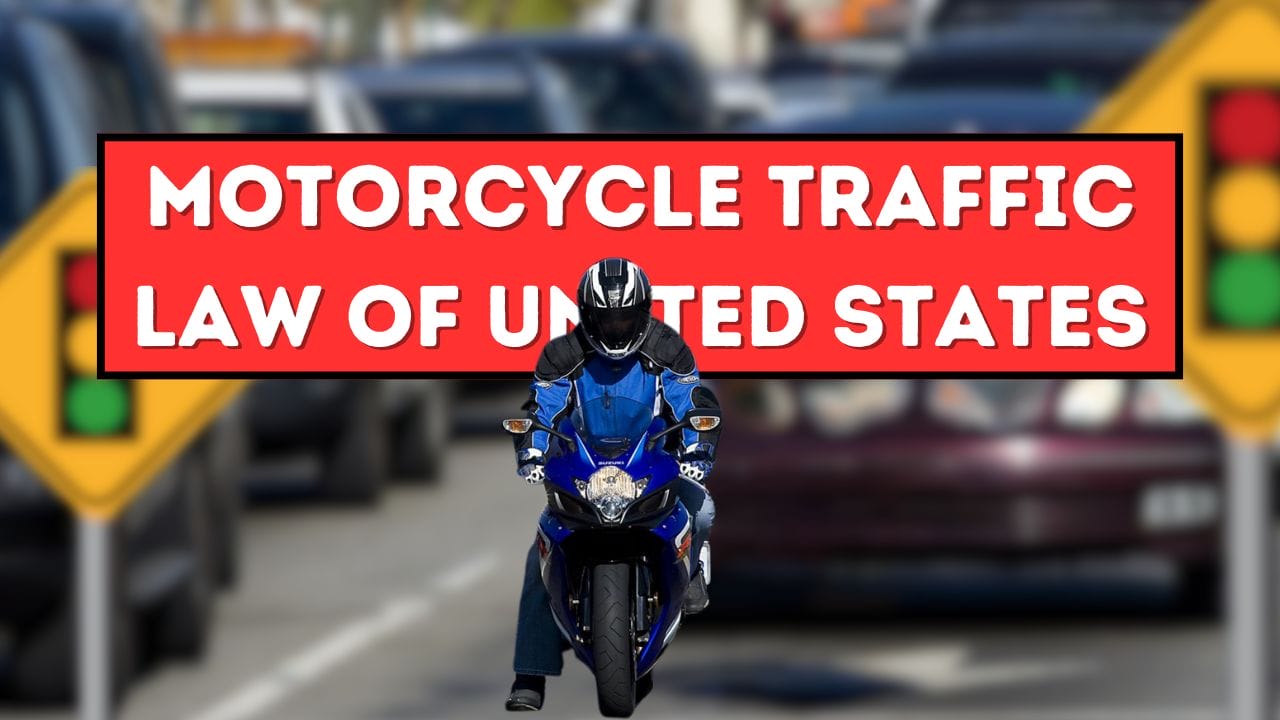Motorcycle Traffic Law of United States
Motorcycle traffic laws serve as the backbone of road safety, significantly contributing to the protection of riders and others sharing the road. These laws are not only a matter of personal safety but also encompass broader legal consequences and can have profound implications on insurance policies. Proper adherence to these laws ensures smoother interactions on the road, reduces accident rates, and safeguards against liability. By understanding and following key motorcycle traffic regulations across the United States, riders can enjoy a safer and more responsible journey.
Why Motorcycle Traffic Laws Are Crucial

Motorcycle traffic laws are crucial for several important reasons. At their core, these laws aim to enhance safety, delineate legal boundaries, and influence insurance matters, all of which are vital for the well-being of riders and others on the road.
1. Safety
Motorcycle traffic laws are primarily designed to protect riders. Given that motorcycles provide less protection compared to cars, these laws help mitigate risks. For instance, helmet use significantly reduces the severity of head injuries, and laws requiring protective gear are integral in minimizing damage during accidents.
2. Legal Consequences
Adhering to motorcycle traffic laws is essential to avoid legal repercussions. Violations can lead to fines, points on the license, or even more severe penalties, such as suspension of driving privileges. Understanding these laws helps riders avoid legal pitfalls and ensures that they remain compliant while on the road.
3. Insurance Implications
Compliance with traffic laws can significantly influence insurance policies and premiums. Riders who consistently follow the rules are often considered lower risk by insurance companies, potentially resulting in lower premiums. Conversely, violations can lead to increased costs and might impact claim processes adversely.
4. Additional Considerations
Motorcycle traffic laws cover a wide range of behaviors and practices, such as legal maneuvering (e.g., lane splitting), visibility (such as headlight use), and regulations regarding speed and traffic signals. Observing safe following distances, understanding right-of-way at intersections, and refraining from using mobile phones while riding are other crucial aspects defined by these laws.
Key Motorcycle Traffic Laws Across the United States
1. Licensing and Endorsements
First things first—you need the right license. Skipping this step is like playing with fire. According to the National Highway Traffic Safety Administration (NHTSA), many motorcycle accidents involve riders without proper licensing. Passing the required tests isn’t just a legal box to tick; it’s your first step towards safe riding.
2. Helmet Use
A helmet isn’t just a fashion statement; it’s your lifeline. The Centers for Disease Control and Prevention (CDC) notes that helmets cut the risk of head injury by 69% and death by 37%. Even if your state law is lenient, wearing a helmet is a no-brainer. Better safe than sorry, right?
3. Protective Gear
Beyond the helmet, your riding gear is your armor. Jackets, gloves, and boots aren’t just for show—they’re for keeping your skin intact if things go south. Reflective clothing is a smart choice, especially since 43% of motorcycle fatalities happen at night. Think of it as making yourself hard to miss, which in this case, is a good thing.
4. Legal Maneuvering: Lane Splitting
Lane splitting is like threading a needle—possible but tricky. It’s only legal in California, and even there, it’s a subject of debate. Done right, it can reduce the risk of rear-end collisions, but outside California, it’s a no-go. Know your state laws to avoid a run-in with the authorities.
5. Visibility and Headlight Use
Your headlight is your best friend. Many states require it to be on all the time because it helps others see you. Whether it’s high noon or twilight, a lit headlight makes you visible and keeps you out of harm’s way.
6. Speed Management and Traffic Signals
Speeding on a motorcycle is like rolling dice—you never know when your luck will run out. NHTSA data shows that speeding was a factor in 33% of motorcycle fatalities in 2019. Obey traffic signals and speed limits; they’re not just suggestions, they’re your lifeline.
7. Safe Following Distances
Tailgating is a bad idea in any vehicle, but on a motorcycle, it’s downright dangerous. You need more stopping distance, especially if the road is wet. Keeping a safe following distance gives you time to react if the car in front slams on the brakes.
8. Alcohol and Substance Prohibition
Riding under the influence? That’s a surefire way to end up in the hospital—or worse. One-third of motorcycle fatalities involve riders with a blood-alcohol level over the legal limit, according to the NHTSA. The best policy is simple: If you drink, don’t ride.
9. Caution at Intersections
Intersections are where the rubber meets the road—literally. About 50% of motorcycle-vehicle collisions happen here. Approach intersections with your eyes wide open and expect the unexpected. A little caution can go a long way.
10. Weather Preparedness
Riding in bad weather can turn your motorcycle into a slip-and-slide. Rain, fog, or wind requires special techniques and the right gear. It’s all about staying steady and keeping your cool when Mother Nature decides to test your skills.
11. Group Riding Etiquette
Group rides can be fun, but they’re not without rules. A staggered formation gives each rider enough room to react to whatever the road throws at them. Think of it as keeping the herd together without bumping into one another.
12. Right-of-Way at Intersections
Knowing when to yield and when to go at intersections can save you from a world of hurt. The first vehicle to stop should go first at four-way stops, but if two stop at the same time, the vehicle on the right has the right-of-way. It’s a simple rule, but it can prevent a lot of headaches.
13. Use of Turn Signals
Your turn signals aren’t just for decoration—use them! Signaling your intentions well in advance keeps you visible and helps avoid collisions. It’s like giving everyone else on the road a heads-up about your next move.
14. No Mobile Phones While Riding
Using your phone while riding is like texting while crossing a busy street—dangerous and downright foolish. If you must use your phone, pull over first. A distracted rider is an accident waiting to happen.
15. Adherence to Speed, Height, Width, and Weight Limits
Motorcycles are subject to the same speed limits as other vehicles, but there are also specific restrictions regarding height, width, and weight—especially if you’re hauling cargo. Overloading your bike is asking for trouble, so pack smart and ride safe.
16. Making Way for Emergency Vehicles
When you hear a siren, pull over—it’s not just polite, it’s the law. Letting emergency vehicles pass could be the difference between life and death for someone, and it keeps you out of hot water with the law.
17. No U-Turns Where Prohibited
Illegal U-turns are a gamble that’s rarely worth it. Besides being illegal in many areas, making a U-turn where it’s not allowed can put you and others in danger. Plan your route so you don’t have to make sudden, risky maneuvers.
18. Bicycle and Pedestrian Priority
Always give the right of way to bicycles and pedestrians. It’s not just about avoiding tickets—these are the most vulnerable people on the road. Show some respect, and everyone gets to their destination safely.
By sticking to these rules, you’re not just keeping yourself safe—you’re making the road safer for everyone. Riding a motorcycle is a blast, but it’s a responsibility, too. Stay sharp, follow the rules, and enjoy the ride without unnecessary risks.
Deferent State-Specific Motorcycle Laws
Motorcycle laws can vary significantly from state to state in the USA, and riders need to be aware of these differences to ensure compliance and safety. Here are some unique state-specific motorcycle laws:

- California
Lane Splitting: California is unique in that it allows lane splitting, which lets motorcyclists ride between lanes of stopped or slow-moving traffic. This law aims to improve traffic flow and reduce congestion, and it’s the only state with specific regulations governing this practice.
- Texas
Helmet Law: Riders over the age of 21 are not required to wear helmets if they have completed a motorcycle safety course or have health insurance covering motorcycle accident injuries. This provides experienced riders with some flexibility regarding helmet use.
- Florida
Helmet Law: Florida law stipulates that riders over the age of 21 may ride without a helmet if they carry at least $10,000 in medical insurance specific to motorcycle accidents.
- Illinois
No Helmet Law: Illinois does not have a mandatory helmet law for riders or passengers, making it one of the few states with such leniency. Helmet use is always strongly encouraged for safety.
- New York
Mandatory Eye Protection: Riders are required to wear approved goggles or face shields, unless the motorcycle is equipped with a protective windscreen.
- Georgia
Reflective Vests for Passengers: Motorcycles must be equipped with a passenger seat and footrest if carrying a passenger, but an interesting law requires passengers to wear an approved reflective vest at all times, enhancing visibility.
- Pennsylvania
Helmet Law with Exceptions: While Pennsylvania requires helmets, riders aged 21 and over are exempt if they have either had their motorcycle license for over two years or completed a PennDOT-approved motorcycle safety course.
- Missouri
Strict Helmet Law: As of recent changes, all riders are required to wear helmets, contrasting previous years where older riders could forgo wearing one if they met certain insurance conditions.
These unique laws highlight the diversity in state regulations concerning motorcycle operation and safety practices. It’s crucial for motorcycle riders to check specific regulations in each state they plan to ride in, as non-compliance can result in fines and increased safety risks. Always prioritize safety by adhering to the general best practices of motorcycle riding, regardless of local regulations.
Closing Words
Wrapping it up, understanding, and following motorcycle traffic laws isn’t just about avoiding a ticket—it’s about protecting your life and the lives of those around you. Riding may give you that sense of freedom, but the rules of the road are what keep that freedom safe.
So, gear up, stay sharp, and always ride with the mindset that every law you follow is a step toward a safer journey. Whether you’re new to the saddle or have been riding for years, these guidelines are your best companions on the road. Stay safe, ride smart, and let the road be your guide, not your adversary.







